ASSOCIATIVE PROPERTY OF SETS
Subscribe to our ▶️ YouTube channel 🔴 for the latest videos, updates, and tips.
Here we are going to see the associative property used in sets.
For any two two sets, the following statements are true.
(i) Set union is associative
A u (B u C) = (A u B) u C
(i) Set intersection is associative
A n (B n C) = (A n B) n C
Let us look at some example problems based on above properties.
Example 1 :
Given, A = {1, 2, 3, 4, 5}, B = {3, 4, 5, 6} and C = {5, 6, 7, 8}, show that
(i) A u (B u C) = (A u B) u C. (ii) Verify (i) using Venn diagram.
Solution :
Now,
B u C = {3, 4, 5, 6} U {5, 6, 7, 8} = {3, 4, 5, 6, 7, 8}
A u (B u C) = {1, 2, 3, 4, 5} u { 3, 4, 5, 6, 7, 8}
= {1, 2, 3, 4, 5, 6, 7, 8} -----(1)
A u B = {1, 2, 3, 4, 5} u {3, 4, 5, 6} = {1,2,3,4,5,6}
(A u B) u C = {1,2,3,4,5,6} u {5,6,7,8}
= {1, 2, 3, 4, 5, 6, 7, 8} ----- (2)
(1) = (2)
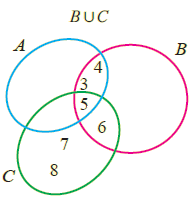 |
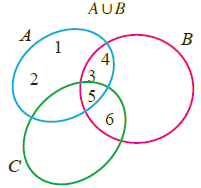 |
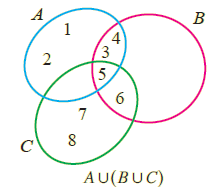 |
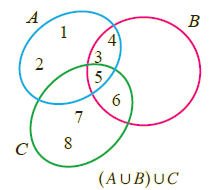 |
Example 2 :
Let A = {a, b, c, d}, B = {a, c, e} and C = {a, e}.
(i) Show that A n (B n C) = (A n B) n C. (ii) Verify (i) using Venn diagram
Solution :
B n C = {a, c, e} n {a, e} = {a, e}
A n (B n C) = {a, b, c ,d} U {a, e}
= { a } -----(1)
A n B = {a, b, c, d} n {a, c, e} = {a, c}
(A n B) n C = {a, c} n {a, e}
= {a} -----(2)
(1) = (2)
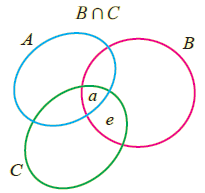 |
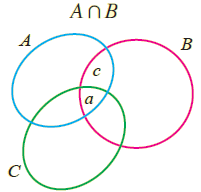 |
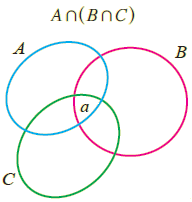 |
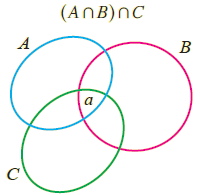 |
Example 3 :
For A = {x ; x is a prime factor of 42}, B = {x | 5 x ≤ 12, x ∊ N} and C = {1, 4, 5, 6}, verify A U (B U C) = (A U B) U C
Solution :
A = {2, 3, 7}, B = {5, 6, 7, 8, 9, 10, 11, 12}, C = {1, 4, 5, 6}
B u C = {5, 6, 7, 8, 9, 10, 11, 12} u {1, 4, 5, 6}
= {1, 2, 4, 6, 8, 9, 10, 11, 12}
A u (B u C) = {2, 3, 7} u {1, 2, 4, 6, 8, 9, 10, 11, 12}
= {1, 2, 3, 4, 6, 7, 8, 9, 10, 11, 12} ----(1)
A u B = {2, 3, 7} u {5, 6, 7, 8, 9, 10, 11, 12}
= {2, 3, 5, 6, 7, 8, 9, 10, 11, 12}
(A u B) u C = {2, 3, 5, 6, 7, 8, 9, 10, 11, 12} u {1, 4, 5, 6}
= {1, 2, 3, 4, 6, 7, 8, 9, 10, 11, 12} ----(2)
(1) = (2)
Subscribe to our ▶️ YouTube channel 🔴 for the latest videos, updates, and tips.
Kindly mail your feedback to v4formath@gmail.com
We always appreciate your feedback.
©All rights reserved. onlinemath4all.com
Recent Articles
-
10 Hard SAT Math Questions (Part - 38)
Dec 08, 25 12:12 AM
10 Hard SAT Math Questions (Part - 38) -
SAT Math Practice
Dec 05, 25 04:04 AM
SAT Math Practice - Different Topics - Concept - Formulas - Example problems with step by step explanation -
10 Hard SAT Math Questions (Part - 37)
Dec 03, 25 07:02 AM
10 Hard SAT Math Questions (Part - 37)


